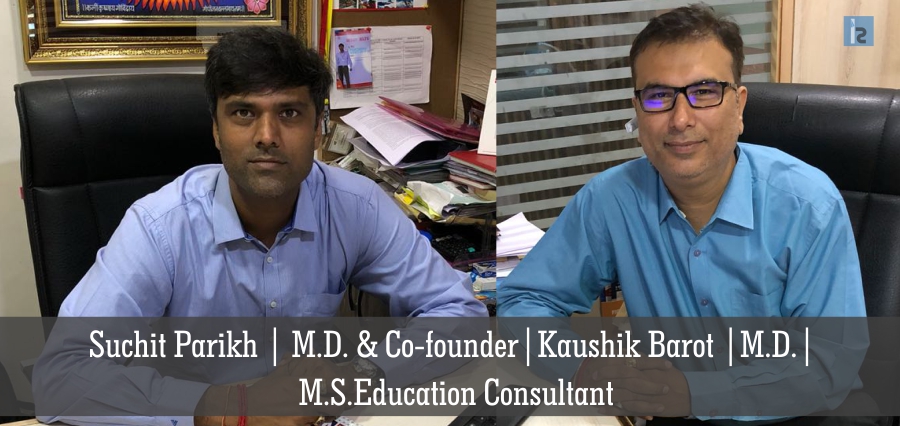The instinct of going abroad and settling there has to be considered as a part of an Indian gene considering the fact that India has a vast Diaspora in any corner of the world (I am not a flat-Earther). Correspondingly, the number of Indian students going abroad to study has been constantly increasing in the past decade.
There are many factors affecting Indian students’ decision of choosing to study abroad. One major reason is that India does not have enough good educational institutes compared to the number of students. There are only a few top institutes that can claim of providing international level of education and the ones that have the reputation of being outstanding have extreme competition for limited number of available seats. Take Delhi University for example, DU has constantly remained in the news each ‘result season’ for its cut off marks. The record was set in the 2011 when the cut off to get admission in Sri Ram college of Commerce was announced to be a 100%. In the other colleges of DU the cut offs are anywhere between 80% to 98%. Similarly the cut offs for admission into Indian Institute of Managements remain around 90% almost every year while the cut offs for Indian institute of Technology also remain high.
Another important reason for settling abroad is the living standards of people. Most of the students who emigrate abroad have the ultimate goal of settling there and the developed countries fulfil their dreams. The quality of life is better; one is not looked down upon based on what they do for work or for their social background unlike India. Not to mention that most of the developed countries are much safer as well.
Not surprisingly, USA has been the favourite among students throughout the past because of its economy and high living standards. However, after the recent election in USA, there has been a shift of mindset of students. For most of the Indian students safety and immigration policy are two major concerns and Canada has proven to be the best in both of the criterions over the last decade. Canada is very welcoming to immigrants and refugees. It is a very large country with a comparatively low population. Canada needs workforce and so the immigration rules are quite liberal as of now.
In the past students used to only go for business or STEM (science, technology, engineering or mathematics) but now students are choosing programs outside of conventional course list. For example in Canada, Early childhood management, community service programs, etc are in high demand. The fees for such programs are relatively low compared to the conventional ones and the employment opportunities after the completion of the course are very bright. Additionally, almost all students going to Canada are able to secure part time jobs to offset their living expenses during their studies.
Canada is very respectful when it comes to its students’ ethnicity and encourages them to follow their cultures and traditions. One can easily find mini India, mini China or any other countries’ traditions being followed and respected. Moreover, getting a permanent residence in Canada after study is easier compared to other developed countries. Canadian government encourages the students to apply for PR after they complete their studies and show a credible work profile. Now of course Canada has different provincial nominee programs for PR so the rules and file processing times vary depending on the province. The easiest way to get a PR in the current scenario is the Quebec province PR program. A person becomes eligible to apply for a PR after studying there for 2 years. Whist in other provinces, one has to be in a full time employment for a certain number of hours before being considered for PR, the number of which varies depending on the province.
Canada realises the importance of having a younger workforce, and students are a big part of it. That is why in June 2018 Canada replaced their SPP-Non SPP programs with the new SDS program. Students filing their visa under SPP had to submit a bunch of theirs and their parents’ documents, and if either of the parent were to be a government employee, getting their document was a tedious task. Therefore, this Study Direct Stream program is an ease of getting student visa. Any student who has appeared in the IELTS exam and has secured a minimum of 6 bands in each category is eligible to apply for visa under this category. The student need to pay one year of his fee, get a GIC certificate and show a minor amount in his bank balance. The visa ratio of SDS program is also high and the processing time is four weeks.
About the authors:
Suchit Parikh:
M.D. and Co-founder of M.S.Education Consultant. Parikh founded this consultancy in 2000 along with Mr. Mahesh Brahmbhatt. He is an MBA in marketing and has been in business world for more than 20 years. He thinks ahead of his time, and decides the business strategies of all the branches. His hard work and dedication has made the organization what it is today.
Kaushik Barot
M.D. of M.S. Education Consultant. Barot, born and brought up in Nadiad, a nearby city to the headquarter of organization, knows this city like the back of his palm and plays key role in working of the organization. He went to U.K. to finish his post graduation and soon after completing his M.Sc. I.T. he came back to India to follow his father’s footsteps. In a short time, he has helped the organization achieve great results.
Why do Students Prefering Overseas Education ?


